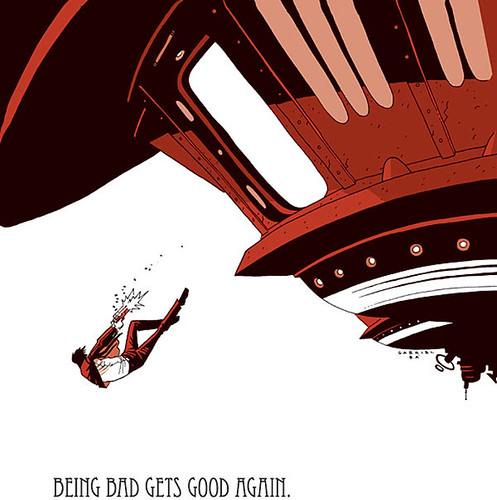 Jacques Bodin
Jacques Bodin
Jacques Bodin @ Wikipedia
Hyperrealism @ Wikipedia
Jean Baudrillard @ Wikipedia
The photo you see here is not a photo. The subject is not real in the sense of a photographed subject. Instead, both the photo and the girl are subjects of a painting by hyperrealist artist Jacques Bodin. An offshoot of the Photorealist movement from the 60s and 70s, hyperrealism differs in both narrative structure and the use of technology to paint or sculpt subject at a level of detail that goes beyond what a 35mm camera could accomplish. The hyper in hyperrealism is taken literally as most works of hyperrealism are produced to a level of detail far beyond that of real life. The dimensions of the finished product go far beyond reality as well. Most paintings and sculptures are done at an almost absurd scale. Thus by paradoxically enlarging then magnifying the detail of their subjects, hyperrealists artists amplify reality to a point of non-reality.
The original photorealists were influenced by semiotician and cultural critic Jean Baudrillard. Basing his ideas on language and semiotics around the idea that an object's meaning is determined by its prestige in relation to other mundane objects. While not as simple as Wittgenstein's formulation it does share traits such as the need for context and relation to other elements in the world. Where Baudrillard breaks with such older theories and joins with his contemporaries Foucault, Lyotard and Lacan in his postmodernist thinking about how reality is perceived and treated in the larger-scale social structure. It is on this point that Baudrillard intersects with the photorealists and hyperrealists. As the relation between object and subject becomes magnified to the point of absolute minutia as the subject (people, you and I), in attempt to gain a total understanding of all reality, becomes lost. Once lost, the subject ends up creating a simulation of reality in their mind. Reality, in this sense, becomes non-reality and to the subject the simulation is more real.
I don't buy most of it, since I never bought into Berkeley's idealism or the theory that perception is so fallible that we never have a truly unmediated experience of reality. Then again, I think Baudrillard did have an understanding of how technology like virtual reality and social networks create a simulated reality that, for some people, becomes more real than the real world itself. The acronym IRL (in real life) is a pretty convincing point of evidence for Baudrillard. Even so, to say that an unmediated experience of the real is, for all intents and purposes, impossible goes beyond what I'm willing to accept as a sentient creature whose grey matter is based on a lizard brain. If you can prove to me that lions chasing down gazelle are also seeing a simulation of reality versus an unmediated reality then perhaps I'll buy into Baudrillard.
But despite my criticism of Baudrillard, his influence on the artistic movement of hyperrealism does expose some of the flaws in the human experience. There are grey areas of experience where we have difficulty telling between the real and and non-real. Our perceptions and beliefs are prone to trickery but this has long been known. It's our ability to winnow out the real and non-real that make the human mind an amazing organism.
Sunday, February 03, 2008
Travels in Hyperrealism
at
7:58 PM
![]()
Labels: hyperrealism, language, photography, photorealism, postmodernism, semiotics
Subscribe to:
Post Comments (Atom)



No comments:
Post a Comment